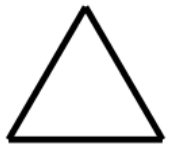CYCLOPROPANE CAS#: 75-19-4; ChemWhat Code: 29571
Identification
| Product Name | CYCLOPROPANE |
| IUPAC Name | cyclopropane |
| Molecular Structure |  |
| CAS Registry Number | 75-19-4 |
| EINECS Number | 200-847-8 |
| MDL Number | MFCD00001268 |
| Beilstein Registry Number | 105692 |
| Synonyms | cyclopropane radical cationcyclopropane-h6 radical cation |
| Molecular Formula | C3H6 |
| Molecular Weight | 42.080 |
| InChI | InChI=1S/C3H6/c1-2-3-1/h1-3H2 |
| InChI Key | LVZWSLJZHVFIQJ-UHFFFAOYSA-N |
| Canonical SMILES | C1CC1 |
| Patent Information | ||
| Patent ID | Title | Publication Date |
| US2010/320428 | GASEOUS DIELECTRICS WITH LOW GLOBAL WARMING POTENTIALS | 2010 |
| US3959362 | Ammonium mercaptoalkanesulfonate salts, their preparation, photographic fixing solutions containing same, and method of fixing photographic film therewith | 1976 |
Physical Data
| Appearance | Liquefied gas |
| Solubility | 464mg/L(25 ºC) |
| Flash Point | 88 ºC |
| Refractive index | 1.3799 |
| Dissociation Exponent (pK) | Temperature (Dissociation Exponent), °C | Solvent (Dissociation Exponent) | Type (Dissociation Exponent) |
| -2.12 | 26.9 | gas | a1/apparent |
Spectra
| Description (Mass Spectrometry) | Comment (Mass Spectrometry) |
| Spectrum | charge exchange with positive ions, collisional activation |
| Description (ESR Spectroscopy) | Solvents (ESR Spectroscopy) | Temperature (ESR Spectroscopy), °C | Comment (ESR Spectroscopy) |
| Spectrum | liquid SF6 | -269.2 – -196.2 | |
| Spectrum | 1,1,2-trichloro-1,2,2-trifluoro-ethane | 4 – 135 | |
| g-factor | |||
| Signals | -269 – -193.2 | Solvent(s): further solvent(s) |
Route of Synthesis (ROS)
| Conditions | Yield |
| With potassium carbonate; N,N-dimethyl-formamide at 20℃; for 49h; | 52% |
| Stage #1: cyclopropane With potassium carbonate In N,N-dimethyl-formamide at 20℃; Stage #2: benzyl chloride In N,N-dimethyl-formamide at 25℃; for 49h; | 52% |
Safety and Hazards
| Pictogram(s) |    |
| Signal | Danger |
| GHS Hazard Statements | H220 (100%): Extremely flammable gas [Danger Flammable gases] H280 (98.7%): Contains gas under pressure; may explode if heated [Warning Gases under pressure] H340 (26%): May cause genetic defects [Danger Germ cell mutagenicity] H350 (26%): May cause cancer [Danger Carcinogenicity] Information may vary between notifications depending on impurities, additives, and other factors. |
| Precautionary Statement Codes | P203, P210, P222, P280, P318, P377, P381, P403, P405, P410+P403, and P501 (The corresponding statement to each P-code can be found at the GHS Classification page.) |
Other Data
| Transportation | Class 6.1; Packaging Group: II; UN Number: 2671 |
| Store at room temperature for long time ; Sealed and keep away from light. | |
| HS Code | 290621 |
| Storage | Store at room temperature for long time ; Sealed and keep away from light. |
| Shelf Life | 1 year |
| Market Price | USD |
| Druglikeness | |
| Lipinski rules component | |
| Molecular Weight | 94.116 |
| logP | -0.047 |
| HBA | 2 |
| HBD | 1 |
| Matching Lipinski Rules | 4 |
| Veber rules component | |
| Polar Surface Area (PSA) | 38.91 |
| Rotatable Bond (RotB) | 0 |
| Matching Veber Rules | 2 |
| Use Pattern |
| CYCLOPROPANE CAS#: 75-19-4 is an intermediate of organic compounds and can be used to synthesize drugs and other chemicals. And It can also be used as a monomer or precursor of polymers to synthesize special polymer materials. |
Buy Reagent | |
| No reagent supplier? | Send quick inquiry to ChemWhat |
| Want to be listed here as a reagent supplier? (Paid service) | Click here to contact ChemWhat |
Approved Manufacturers | |
| Want to be listed as an approved manufacturer (Requires approvement)? | Please download and fill out this form and send back to approved-manufacturers@chemwhat.com |
Other Suppliers | |
| Watson International Limited | Visit Watson Official Website |
Contact Us for Other Help | |
| Contact us for other information or services | Click here to contact ChemWhat |


